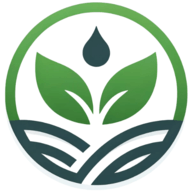5 Mindfulness Techniques to Incorporate into Wellness Coaching
Discover the power of mindfulness techniques to elevate wellness coaching, with valuable insights from seasoned experts. These strategies are designed to harness natural awareness, engage the senses, and cultivate presence in everyday life. Learn practical exercises and micro-practices that can be seamlessly integrated into daily routines for lasting wellbeing.
- Engage Senses for Stress Reduction
- Access Natural Awareness for Clarity
- Use Mindfulness to Tune Into Present
- Incorporate Micro-Practices for Daily Mindfulness
- Try the 5-4-3-2-1 Grounding Exercise
Engage Senses for Stress Reduction
I incorporate mindfulness and stress-reduction techniques seamlessly into my coaching sessions, meeting clients where they are in the moment. One practice I've found especially impactful is sensory awareness. By guiding clients to engage their senses—what they see, hear, feel, smell, or taste—they reconnect with the present moment and shift out of anxious, future-focused thinking. This simple yet powerful exercise helps calm the nervous system, regulate stress, and build self-awareness. Whether it's a quick grounding activity or a deeper exploration, sensory awareness offers clients an accessible tool they can carry into their daily lives to stay centered and intentional.

Access Natural Awareness for Clarity
My approach to mindfulness draws from two powerful streams: Hakomi Mindful Somatic Psychotherapy and Vajrayana Buddhism's teachings on awake awareness. This isn't about adding more techniques to your spiritual toolbox—it's about accessing what's already here, beneath the noise of an overactive mind.
Working with founders, executives, and creatives has shown me that cookie-cutter mindfulness tips often miss the mark. Through Hakomi's body-centered approach, I help people develop an honest relationship with their somatic intelligence. This might mean helping a CEO notice how their nervous system responds during high-stakes decisions, or guiding someone to recognize how stress manifests in their body before it hijacks their mind.
The real game-changer comes from combining this somatic work with what Vajrayana Buddhism calls 'natural awareness'—that innate capacity to rest in what's already whole and complete. Instead of struggling to calm the mind, we learn to unhook awareness from thought and drop into direct experience. You can taste this freedom as easily as shifting attention from your racing thoughts to the sensations in your hands.
For executives facing intense pressure, this means discovering they can access clarity without forcing their mind into submission. For creatives stuck in perfectionism, it's about finding flow states naturally. For those battling anxiety or modern addictions, it's recognizing that peace isn't something to achieve—it's what remains when we stop trying so hard to fix ourselves.
This approach has profound implications for both personal wellbeing and professional performance. When we're not caught in mental proliferation, we can access clearer decision-making and more authentic leadership. The work is always tailored to the individual, but the core insight remains: whether you're in a board meeting or family dinner, you can always return to the awareness that's already free, already calm, already alert.
Use Mindfulness to Tune Into Present
Incorporating mindfulness and stress-reduction techniques into wellness coaching sessions is like adding a secret ingredient to a recipe. It can truly elevate the experience and results for clients. We all know life can get pretty hectic, leaving us feeling overwhelmed and disconnected. That's where mindfulness comes in. It's all about bringing our attention to the present moment without judgment. It's like hitting the pause button on the chaos of life and just tuning in to yourself.
Now, there are tons of different mindfulness practices out there, but some of the most beneficial ones I've found for my clients include things like meditation, deep breathing exercises, and body scans. These practices not only help reduce stress but also increase self-awareness and emotional regulation. It's incredible how something as simple as paying attention to your breath can create a sense of calm amidst the storm. And the best part? These techniques are like tools you can carry with you anywhere, empowering you to navigate challenges with more ease and resilience.

Incorporate Micro-Practices for Daily Mindfulness
Brief breath awareness exercises often are a good starting point, usually 2-3 minutes rather than longer meditation sessions. These "micro-practices" help clients experience benefits without feeling overwhelmed. Body-based practices prove especially effective for clients who find traditional meditation challenging. Progressive muscle relaxation and mindful walking help people reconnect with physical sensations rather than remaining caught in anxious thoughts. The most sustainable results may arise from incorporating mindfulness as an integral part of normal activity rather than as separate practice. Teaching clients to draw attention to routine activities such as eating, showering, and checking email helps develop consistent meditation habits without taking up extraneous time. The strategy here is to tailor these to individual client needs and availability while weaving them into their natural schedule and routines rather than trying the same approach for everyone.

Try the 5-4-3-2-1 Grounding Exercise
In my job at Mission Connection, I use mindfulness as a key tool in every session. My clients like the "5-4-3-2-1 grounding exercise." It's easy but effective: when stress gets too much, I ask them to list five things they see, four they can touch, three they hear, two they smell, and one they taste.
A patient told me this method helped them get a grip during a panic attack at work. It brought their focus back to the present giving their mind and body a chance to reset. They now do it often and say it's like having a "portable calm button."
What I've seen work best is that mindfulness doesn't need to be complex, it's about meeting clients where they are and helping them create habits that last.



